TPS3700DDCR: Pinout, Datasheet
Surface Mount Tape & Reel (TR) Linear Comparators 7μA μA Surface Mount
The TPS3700DDCR is a device with a wide supply voltage range (1.8 V to 18 V). The article is going to introduce the basic details of the device.

Electronics: resistor selection for TPS3700DDCR undervoltage circuit
TPS3700DDCR Description
For overvoltage and undervoltage detection, the TPS3700DDCR gadget combines two comparators. The TPS3700DDCR is a device with a wide supply voltage range (1.8 V to 18 V) and built-in hysteresis that has a high-accuracy increasing input threshold of 400 mV (1 percent above temperature). The outputs are also rated at 18 volts and can sink up to 40 milliamperes.
TPS3700DDCR Pinout

TPS3700DDCR CAD Model
Symbol

Footprint

3D Model
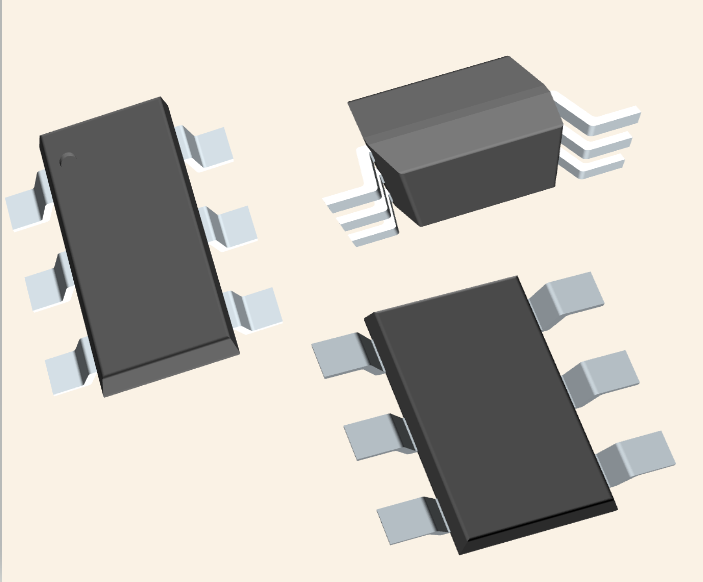
TPS3700DDCR Features
• Wide Supply Voltage Range: 1.8 V to 18 V
• Adjustable Threshold: Down to 400 mV
• High Threshold Accuracy:
– 1.0% Over Temperature
– 0.25% (Typical)
• Low Quiescent Current: 5.5 µA (Typical)
•Open-Drain Outputs for Overvoltage and Undervoltage Detection
• Internal Hysteresis: 5.5 mV (Typ)
• Temperature Range: –40°C to 125°C
• Packages:
– SOT-6
– 1.5-mm × 1.5-mm WSON-6
TPS3700DDCR Equivalents
| Part Number | Description | Manufacturer |
| TPS3700QDSERQ1POWER CIRCUITS | Automotive high-voltage (18-V) window voltage detector for overvoltage and undervoltage monitoring 6-WSON -40 to 125 | Texas Instruments |
| ISL9238HRTZ-T7APOWER CIRCUITS | Buck-Boost Narrow VDC Battery Charger with SMBus Interface and USB OTG; TQFN32; Temp Range: See Datasheet | Intersil Corporation |
| TPS3700QDDCRQ1POWER CIRCUITS | Automotive high-voltage (18-V) window voltage detector for overvoltage and undervoltage monitoring 6-SOT-23-THIN -40 to 125 | Texas Instruments |
| TPS3700DDCR2POWER CIRCUITS | High-voltage (18-V) window voltage detector for overvoltage and undervoltage monitoring 6-SOT-23-THIN -40 to 125 | Texas Instruments |
| ISL9238IRTZPOWER CIRCUITS | Buck-Boost Narrow VDC Battery Charger with SMBus Interface and USB OTG | Renesas Electronics Corporation |
| ISL9238HRTZ-TPOWER CIRCUITS | Buck-Boost Narrow VDC Battery Charger with SMBus Interface and USB OTG; TQFN32; Temp Range: See Datasheet | Intersil Corporation |
| ISL9238HRTZ-TKPOWER CIRCUITS | Buck-Boost Narrow VDC Battery Charger with SMBus Interface and USB OTG | Renesas Electronics Corporation |
| TPS3700DSETPOWER CIRCUITS | High-voltage (18-V) window voltage detector for overvoltage and undervoltage monitoring 6-WSON -40 to 125 | Texas Instruments |
Specifications
- TypeParameter
- Lifecycle Status
Lifecycle Status refers to the current stage of an electronic component in its product life cycle, indicating whether it is active, obsolete, or transitioning between these states. An active status means the component is in production and available for purchase. An obsolete status indicates that the component is no longer being manufactured or supported, and manufacturers typically provide a limited time frame for support. Understanding the lifecycle status is crucial for design engineers to ensure continuity and reliability in their projects.
ACTIVE (Last Updated: 5 days ago) - Factory Lead Time6 Weeks
- Mount
In electronic components, the term "Mount" typically refers to the method or process of physically attaching or fixing a component onto a circuit board or other electronic device. This can involve soldering, adhesive bonding, or other techniques to secure the component in place. The mounting process is crucial for ensuring proper electrical connections and mechanical stability within the electronic system. Different components may have specific mounting requirements based on their size, shape, and function, and manufacturers provide guidelines for proper mounting procedures to ensure optimal performance and reliability of the electronic device.
Surface Mount - Mounting Type
The "Mounting Type" in electronic components refers to the method used to attach or connect a component to a circuit board or other substrate, such as through-hole, surface-mount, or panel mount.
Surface Mount - Package / Case
refers to the protective housing that encases an electronic component, providing mechanical support, electrical connections, and thermal management.
SOT-23-6 Thin, TSOT-23-6 - Number of Pins6
- Number of Elements2
- Watchdog TimersNo
- Operating Temperature
The operating temperature is the range of ambient temperature within which a power supply, or any other electrical equipment, operate in. This ranges from a minimum operating temperature, to a peak or maximum operating temperature, outside which, the power supply may fail.
-40°C~125°C - Packaging
Semiconductor package is a carrier / shell used to contain and cover one or more semiconductor components or integrated circuits. The material of the shell can be metal, plastic, glass or ceramic.
Tape & Reel (TR) - JESD-609 Code
The "JESD-609 Code" in electronic components refers to a standardized marking code that indicates the lead-free solder composition and finish of electronic components for compliance with environmental regulations.
e4 - Pbfree Code
The "Pbfree Code" parameter in electronic components refers to the code or marking used to indicate that the component is lead-free. Lead (Pb) is a toxic substance that has been widely used in electronic components for many years, but due to environmental concerns, there has been a shift towards lead-free alternatives. The Pbfree Code helps manufacturers and users easily identify components that do not contain lead, ensuring compliance with regulations and promoting environmentally friendly practices. It is important to pay attention to the Pbfree Code when selecting electronic components to ensure they meet the necessary requirements for lead-free applications.
yes - Part Status
Parts can have many statuses as they progress through the configuration, analysis, review, and approval stages.
Active - Moisture Sensitivity Level (MSL)
Moisture Sensitivity Level (MSL) is a standardized rating that indicates the susceptibility of electronic components, particularly semiconductors, to moisture-induced damage during storage and the soldering process, defining the allowable exposure time to ambient conditions before they require special handling or baking to prevent failures
2 (1 Year) - Number of Terminations6
- ECCN Code
An ECCN (Export Control Classification Number) is an alphanumeric code used by the U.S. Bureau of Industry and Security to identify and categorize electronic components and other dual-use items that may require an export license based on their technical characteristics and potential for military use.
EAR99 - TypeWindow
- Terminal Finish
Terminal Finish refers to the surface treatment applied to the terminals or leads of electronic components to enhance their performance and longevity. It can improve solderability, corrosion resistance, and overall reliability of the connection in electronic assemblies. Common finishes include nickel, gold, and tin, each possessing distinct properties suitable for various applications. The choice of terminal finish can significantly impact the durability and effectiveness of electronic devices.
Nickel/Palladium/Gold (Ni/Pd/Au) - Terminal Position
In electronic components, the term "Terminal Position" refers to the physical location of the connection points on the component where external electrical connections can be made. These connection points, known as terminals, are typically used to attach wires, leads, or other components to the main body of the electronic component. The terminal position is important for ensuring proper connectivity and functionality of the component within a circuit. It is often specified in technical datasheets or component specifications to help designers and engineers understand how to properly integrate the component into their circuit designs.
DUAL - Terminal Form
Occurring at or forming the end of a series, succession, or the like; closing; concluding.
GULL WING - Peak Reflow Temperature (Cel)
Peak Reflow Temperature (Cel) is a parameter that specifies the maximum temperature at which an electronic component can be exposed during the reflow soldering process. Reflow soldering is a common method used to attach electronic components to a circuit board. The Peak Reflow Temperature is crucial because it ensures that the component is not damaged or degraded during the soldering process. Exceeding the specified Peak Reflow Temperature can lead to issues such as component failure, reduced performance, or even permanent damage to the component. It is important for manufacturers and assemblers to adhere to the recommended Peak Reflow Temperature to ensure the reliability and functionality of the electronic components.
260 - Number of Functions1
- Supply Voltage
Supply voltage refers to the electrical potential difference provided to an electronic component or circuit. It is crucial for the proper operation of devices, as it powers their functions and determines performance characteristics. The supply voltage must be within specified limits to ensure reliability and prevent damage to components. Different electronic devices have specific supply voltage requirements, which can vary widely depending on their design and intended application.
5V - Terminal Pitch
The center distance from one pole to the next.
0.95mm - Base Part Number
The "Base Part Number" (BPN) in electronic components serves a similar purpose to the "Base Product Number." It refers to the primary identifier for a component that captures the essential characteristics shared by a group of similar components. The BPN provides a fundamental way to reference a family or series of components without specifying all the variations and specific details.
TPS3700 - Pin Count
a count of all of the component leads (or pins)
6 - Output Type
The "Output Type" parameter in electronic components refers to the type of signal or data that is produced by the component as an output. This parameter specifies the nature of the output signal, such as analog or digital, and can also include details about the voltage levels, current levels, frequency, and other characteristics of the output signal. Understanding the output type of a component is crucial for ensuring compatibility with other components in a circuit or system, as well as for determining how the output signal can be utilized or processed further. In summary, the output type parameter provides essential information about the nature of the signal that is generated by the electronic component as its output.
Open Drain - Number of Channels1
- Operating Supply Current
Operating Supply Current, also known as supply current or quiescent current, is a crucial parameter in electronic components that indicates the amount of current required for the device to operate under normal conditions. It represents the current drawn by the component from the power supply while it is functioning. This parameter is important for determining the power consumption of the component and is typically specified in datasheets to help designers calculate the overall power requirements of their circuits. Understanding the operating supply current is essential for ensuring proper functionality and efficiency of electronic systems.
5.5μA - Nominal Supply Current
Nominal current is the same as the rated current. It is the current drawn by the motor while delivering rated mechanical output at its shaft.
7μA - Adjustable Threshold
The "Adjustable Threshold" parameter in electronic components refers to the ability to manually set or modify the threshold level at which a specific function or operation is triggered. This feature allows users to customize the sensitivity or activation point of the component according to their specific requirements or preferences. By adjusting the threshold, users can fine-tune the performance of the component to suit different applications or environmental conditions. This flexibility in threshold adjustment can be particularly useful in various electronic devices and systems where precise control over triggering levels is necessary for optimal functionality.
YES - Propagation Delay
the flight time of packets over the transmission link and is limited by the speed of light.
29 μs - Quiescent Current
The quiescent current is defined as the current level in the amplifier when it is producing an output of zero.
11μA - Voltage - Supply, Single/Dual (±)
The parameter "Voltage - Supply, Single/Dual (±)" in electronic components refers to the power supply voltage required for the proper operation of the component. This parameter indicates whether the component requires a single power supply voltage (e.g., 5V) or a dual power supply voltage (e.g., ±15V). For components that require a single power supply voltage, only one voltage level is needed for operation. On the other hand, components that require a dual power supply voltage need both positive and negative voltage levels to function correctly.Understanding the voltage supply requirements of electronic components is crucial for designing and integrating them into circuits to ensure proper functionality and prevent damage due to incorrect voltage levels.
1.8V~18V - Threshold Voltage
The threshold voltage is a critical parameter in electronic components, particularly in field-effect transistors (FETs). It refers to the minimum voltage required at the input terminal of the FET to turn it on and allow current to flow between the source and drain terminals. Below the threshold voltage, the FET remains in the off state, acting as an open switch. Once the threshold voltage is exceeded, the FET enters the on state, conducting current between the source and drain.The threshold voltage is a key factor in determining the operating characteristics of FETs, such as their switching speed and power consumption. It is typically specified by the manufacturer and can vary depending on the specific type of FET and its design. Designers must consider the threshold voltage when selecting FETs for a particular application to ensure proper functionality and performance.
400mV - Undervoltage Threshold
During power up and power down, the UVLO function of the device has at least 0.1 V of hysteresis, but not more than 0.3 V. The UVLO function in power devices is a useful feature that enables robust system behavior across a wide range of operating conditions.
1.7V - Current - Quiescent (Max)
The parameter "Current - Quiescent (Max)" in electronic components refers to the maximum amount of current that a device consumes when it is in a quiescent or idle state. This parameter is important because it indicates the minimum power consumption of the device when it is not actively performing any tasks. It is typically measured in units of amperes (A) and helps in determining the overall power efficiency and battery life of the electronic component. Designers and engineers use this parameter to ensure that the device meets power consumption requirements and operates within specified limits during standby or idle modes.
11μA - Hysteresis
Hysteresis in electronic components refers to the phenomenon where the output of a system depends not only on its current input but also on its past inputs. In other words, the system's response to a particular input may differ depending on whether the input is increasing or decreasing. This behavior is often seen in devices such as sensors, amplifiers, and control systems. Hysteresis can be intentional, designed to provide stability or prevent rapid switching, or it can be unwanted and lead to inaccuracies in the system's performance. Understanding and managing hysteresis is important in ensuring the reliability and accuracy of electronic components and systems.
5.5mV - Height1.1mm
- Length2.9mm
- Width1.6mm
- Thickness
Thickness in electronic components refers to the measurement of how thick a particular material or layer is within the component structure. It can pertain to various aspects, such as the thickness of a substrate, a dielectric layer, or conductive traces. This parameter is crucial as it impacts the electrical, mechanical, and thermal properties of the component, influencing its performance and reliability in electronic circuits.
870μm - RoHS Status
RoHS means “Restriction of Certain Hazardous Substances” in the “Hazardous Substances Directive” in electrical and electronic equipment.
ROHS3 Compliant - REACH SVHC
The parameter "REACH SVHC" in electronic components refers to the compliance with the Registration, Evaluation, Authorization, and Restriction of Chemicals (REACH) regulation regarding Substances of Very High Concern (SVHC). SVHCs are substances that may have serious effects on human health or the environment, and their use is regulated under REACH to ensure their safe handling and minimize their impact.Manufacturers of electronic components need to declare if their products contain any SVHCs above a certain threshold concentration and provide information on the safe use of these substances. This information allows customers to make informed decisions about the potential risks associated with using the components and take appropriate measures to mitigate any hazards.Ensuring compliance with REACH SVHC requirements is essential for electronics manufacturers to meet regulatory standards, protect human health and the environment, and maintain transparency in their supply chain. It also demonstrates a commitment to sustainability and responsible manufacturing practices in the electronics industry.
No SVHC - Lead Free
Lead Free is a term used to describe electronic components that do not contain lead as part of their composition. Lead is a toxic material that can have harmful effects on human health and the environment, so the electronics industry has been moving towards lead-free components to reduce these risks. Lead-free components are typically made using alternative materials such as silver, copper, and tin. Manufacturers must comply with regulations such as the Restriction of Hazardous Substances (RoHS) directive to ensure that their products are lead-free and environmentally friendly.
Lead Free
TPS3700DDCR Applications
• Industrial Control Systems
• Automotive Systems
• Embedded Computing Modules
• DSP, Microcontroller, or Microprocessor Applications
• Notebook and Desktop Computers
• Portable- and Battery-Powered Products
• FPGA and ASIC Applications
TPS3700DDCR Typical Application Circuit

TPS3700DDCR Typical Application Circuit
TPS3700DDCR Manufacturer
Texas Instruments Incorporated (TI) is an American technology company based in Dallas, Texas, that designs and manufactures semiconductors and various integrated circuits, which it sells to electronics designers and manufacturers globally. It is one of the top 10 semiconductor companies worldwide based on sales volume. The company's focus is on developing analog chips and embedded processors, which account for more than 80% of its revenue. TI also produces TI digital light processing technology and education technology products including calculators, micro-controllers, and multi-core processors. The company boasts 45,000 patents around the globe as of 2016.
Trend Analysis
Parts with Similar Specs
- ImagePart NumberManufacturerPackage / CaseNumber of PinsUndervoltage ThresholdThreshold VoltageWatchdog TimerSupply VoltageRoHS StatusMountView Compare
TPS3700DDCR
SOT-23-6 Thin, TSOT-23-6
6
1.7 V
400 mV
No
5 V
ROHS3 Compliant
Surface Mount
SC-74A, SOT-753
5
3.034 V
+3.1V
No
3.3 V
ROHS3 Compliant
Surface Mount
SC-74A, SOT-753
5
4.561 V
+4.6V
No
3.3 V
ROHS3 Compliant
Surface Mount
SC-74A, SOT-753
5
-
+2.5V
No
3.3 V
ROHS3 Compliant
Surface Mount
Datasheet PDF
- Datasheets :
What is TPS3700DDCR?
For overvoltage and undervoltage detection, the TPS3700DDCR gadget combines two comparators. The TPS3700DDCR is a device with a wide supply voltage range (1.8 V to 18 V) and built-in hysteresis that has a high-accuracy increasing input threshold of 400 mV (1 percent above temperature). The outputs are also rated at 18 volts and can sink up to 40 milliamperes.
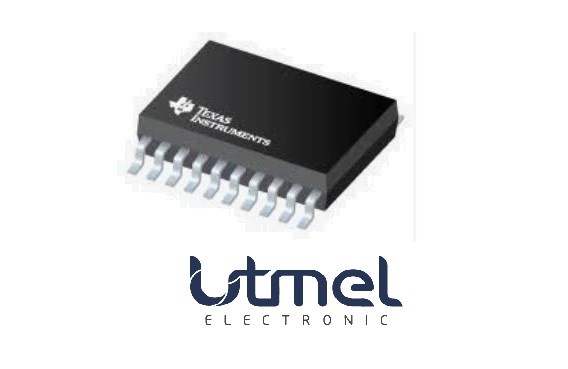 LM5117 Wide Input Sync Buck with Current Monitor: Pinout and Datasheet
LM5117 Wide Input Sync Buck with Current Monitor: Pinout and Datasheet28 September 20221617
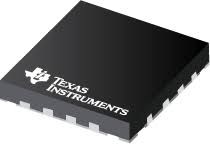 LDC1614RGHT LDC: Pinout, Specification, and Datasheet
LDC1614RGHT LDC: Pinout, Specification, and Datasheet07 June 20211694
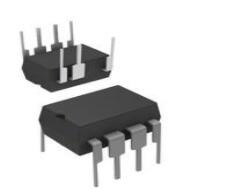 TNY268PN Switcher: TNY268PN, Datasheet PDF, Application Circuit
TNY268PN Switcher: TNY268PN, Datasheet PDF, Application Circuit21 April 202212618
 ATmega16 Microcontroller: Datasheet, Pinout and Alternatives
ATmega16 Microcontroller: Datasheet, Pinout and Alternatives16 July 20217821
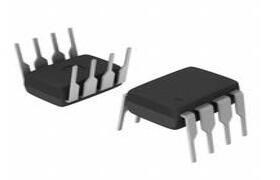 TBA820M Amplifier: Datasheet, Circuit, Alternative
TBA820M Amplifier: Datasheet, Circuit, Alternative28 October 20215330
 SN74LV1T125DCKR Single Buffer Gate: Package, Pinout, and Datasheet
SN74LV1T125DCKR Single Buffer Gate: Package, Pinout, and Datasheet15 April 20221298
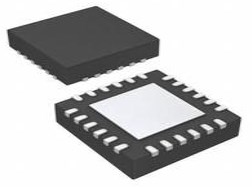 TCA9548ARGER I2C Switch: Diagram, Pinout, and Datasheet
TCA9548ARGER I2C Switch: Diagram, Pinout, and Datasheet23 March 20223092
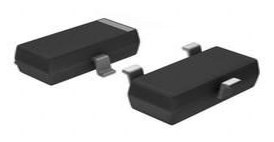 MIC803 3-Pin Microprocessor Supervisor Circuit: Pinout, Equivalent and Datasheet
MIC803 3-Pin Microprocessor Supervisor Circuit: Pinout, Equivalent and Datasheet08 January 20221081
 PCB Design Guidelines
PCB Design Guidelines21 December 20215220
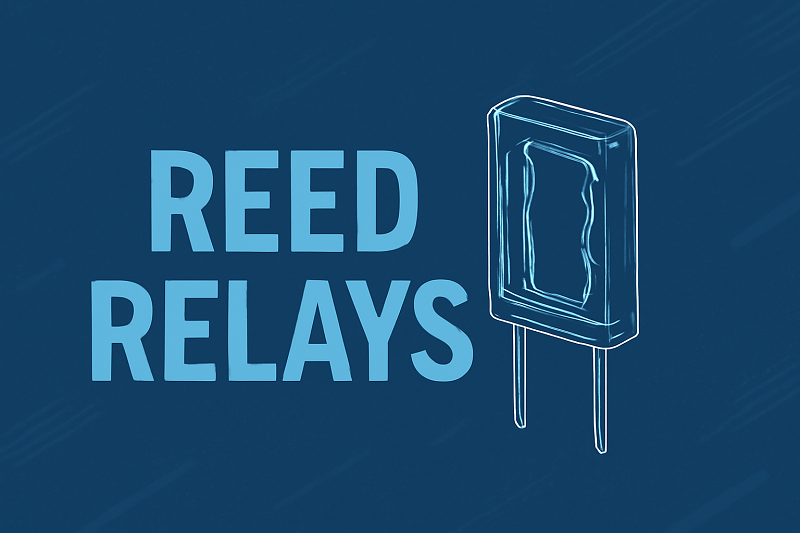 Reed Relays: 10 Key Applications in Modern Electronics
Reed Relays: 10 Key Applications in Modern Electronics04 July 2025588
 GlobalFoundries Unveils $4 Billion Expansion in Singapore to Meet Rising Chip Demand
GlobalFoundries Unveils $4 Billion Expansion in Singapore to Meet Rising Chip Demand13 September 20232393
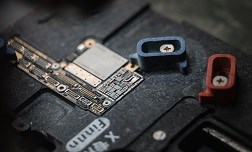 Basic Guidelines for Mixed-Signal PCB Layout Design
Basic Guidelines for Mixed-Signal PCB Layout Design15 March 20244288
 Introduction to BGA Package
Introduction to BGA Package07 December 20214536
 Tech Giants Accelerate In-House Semiconductor Design, Threatening Fabless Chipmakers
Tech Giants Accelerate In-House Semiconductor Design, Threatening Fabless Chipmakers27 September 20231522
 Huang Renxun: Nvidia Is No Longer a GPU Company
Huang Renxun: Nvidia Is No Longer a GPU Company06 April 20221139
 In-depth Analysis of the Global Semiconductor Supply Chain
In-depth Analysis of the Global Semiconductor Supply Chain20 January 202211938
Texas Instruments
In Stock: 23250
United States
China
Canada
Japan
Russia
Germany
United Kingdom
Singapore
Italy
Hong Kong(China)
Taiwan(China)
France
Korea
Mexico
Netherlands
Malaysia
Austria
Spain
Switzerland
Poland
Thailand
Vietnam
India
United Arab Emirates
Afghanistan
Åland Islands
Albania
Algeria
American Samoa
Andorra
Angola
Anguilla
Antigua & Barbuda
Argentina
Armenia
Aruba
Australia
Azerbaijan
Bahamas
Bahrain
Bangladesh
Barbados
Belarus
Belgium
Belize
Benin
Bermuda
Bhutan
Bolivia
Bonaire, Sint Eustatius and Saba
Bosnia & Herzegovina
Botswana
Brazil
British Indian Ocean Territory
British Virgin Islands
Brunei
Bulgaria
Burkina Faso
Burundi
Cabo Verde
Cambodia
Cameroon
Cayman Islands
Central African Republic
Chad
Chile
Christmas Island
Cocos (Keeling) Islands
Colombia
Comoros
Congo
Congo (DRC)
Cook Islands
Costa Rica
Côte d’Ivoire
Croatia
Cuba
Curaçao
Cyprus
Czechia
Denmark
Djibouti
Dominica
Dominican Republic
Ecuador
Egypt
El Salvador
Equatorial Guinea
Eritrea
Estonia
Eswatini
Ethiopia
Falkland Islands
Faroe Islands
Fiji
Finland
French Guiana
French Polynesia
Gabon
Gambia
Georgia
Ghana
Gibraltar
Greece
Greenland
Grenada
Guadeloupe
Guam
Guatemala
Guernsey
Guinea
Guinea-Bissau
Guyana
Haiti
Honduras
Hungary
Iceland
Indonesia
Iran
Iraq
Ireland
Isle of Man
Israel
Jamaica
Jersey
Jordan
Kazakhstan
Kenya
Kiribati
Kosovo
Kuwait
Kyrgyzstan
Laos
Latvia
Lebanon
Lesotho
Liberia
Libya
Liechtenstein
Lithuania
Luxembourg
Macao(China)
Madagascar
Malawi
Maldives
Mali
Malta
Marshall Islands
Martinique
Mauritania
Mauritius
Mayotte
Micronesia
Moldova
Monaco
Mongolia
Montenegro
Montserrat
Morocco
Mozambique
Myanmar
Namibia
Nauru
Nepal
New Caledonia
New Zealand
Nicaragua
Niger
Nigeria
Niue
Norfolk Island
North Korea
North Macedonia
Northern Mariana Islands
Norway
Oman
Pakistan
Palau
Palestinian Authority
Panama
Papua New Guinea
Paraguay
Peru
Philippines
Pitcairn Islands
Portugal
Puerto Rico
Qatar
Réunion
Romania
Rwanda
Samoa
San Marino
São Tomé & Príncipe
Saudi Arabia
Senegal
Serbia
Seychelles
Sierra Leone
Sint Maarten
Slovakia
Slovenia
Solomon Islands
Somalia
South Africa
South Sudan
Sri Lanka
St Helena, Ascension, Tristan da Cunha
St. Barthélemy
St. Kitts & Nevis
St. Lucia
St. Martin
St. Pierre & Miquelon
St. Vincent & Grenadines
Sudan
Suriname
Svalbard & Jan Mayen
Sweden
Syria
Tajikistan
Tanzania
Timor-Leste
Togo
Tokelau
Tonga
Trinidad & Tobago
Tunisia
Turkey
Turkmenistan
Turks & Caicos Islands
Tuvalu
U.S. Outlying Islands
U.S. Virgin Islands
Uganda
Ukraine
Uruguay
Uzbekistan
Vanuatu
Vatican City
Venezuela
Wallis & Futuna
Yemen
Zambia
Zimbabwe


















